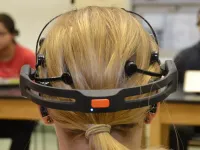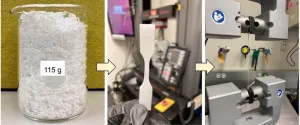(Press-News.org) Hepatitis C and hepatitis B viruses both attack the liver, eventually causing deadly cirrhosis or cancer. But while antivirals can cure 95 percent of HCV infections, its cousin HBV has long eluded effective therapeutics. As a result, nearly 1 million people die from HBV every year.
Now researchers from the lab of Rockefeller’s Charles M. Rice—who shared the 2020 Nobel Prize in Physiology or Medicine for pioneering novel methods to grow and study HCV—have developed an approach for studying HBV in the lab that sidesteps the virus’s typical replication process, allowing for a much sharper view of its behaviors and characteristics during a crucial part of its life cycle. For too long, this view has been obscured, preventing researchers from improving drug treatments, let alone finding a cure.
Just as the Rice lab’s work on HCV exposed that virus’s weaknesses, the hope is that this novel approach could do the same for HBV.
“It’s important to study the whole virus life cycle, because every step is important for how the virus spreads and infects new cells,” says Bill Schneider, a research associate in Rice’s Laboratory of Virology and Infectious Disease, and a co-author on a paper in Science Advances describing their results. “Any one of those steps can potentially be exploited for vulnerabilities.”
Notoriously difficult to study
Despite sharing an affinity for the liver, HBV and HCV are quite different. They’re from different families, have different genetic compositions—HBV is a DNA virus, while HCV is an RNA virus—and HBV is only about one-third the size of HCV, with a unique genetic architecture that makes it more challenging to study.
But they do share some characteristics. They’re both easily transmittable and hard to shake once an infection has taken root. Some 296 million people live with a chronic HBV infection that is often asymptomatic until liver disease has advanced so far that it is largely untreatable.
Unlike with HCV, current HBV therapies can cause intolerable side effects or have limited impact, leading to lifelong drug therapy. And while there’s an effective vaccine that can block new HBV infections, it’s helpless against existing ones.
Progress has been slow for a few reasons. One is that HBV is notoriously difficult to culture in the lab. “It’s not clear why, because it’s an extremely effective virus in nature,” Schneider says. With origins dating to 400 million years ago, HBV and its relatives are capable of infecting a variety of animals.
Another is that methods commonly used to study HBV in the lab are plagued by background noise from HBV DNA and plasmids. The result is a lot of genetic fuzziness that makes it hard to clearly see the virus’s properties. “There’s just so much noise from the plasmids that it is difficult to distinguish something made from the replicating virus as opposed to the plasmid,” says first author Yingpu Yu, a research associate in the Rice lab. “It’s like throwing a lit candle into a bonfire and then trying to study the candle flame.”
Scientists have tried workarounds to tackle this problem, but Rice hit on a winning idea: spark the virus’s life cycle later in the process using RNA, which might allow them to avoid all the DNA noise.
On the road to a potential cure
Like other viruses, HBV hijacks a cell’s molecular machinery in order to reproduce, but its process is a bit unusual. Once inside the nucleus, it uses that machinery to first transcribe its DNA to RNA, and then converts that into a new viral genome called covalently closed circular DNA (cccDNA). It’s these cccDNA genomes that are incredibly difficult to get rid of.
If they could start HBV’s life cycle before it produces cccDNA, that might give them an unobstructed view of the process at the heart of HBV’s ability to become a chronic, destructive tenant of the liver.
Thanks to HBV’s tiny size, it has few RNA transcripts involved in the replication process. One turned out to be key: pre-genomic RNA. Previous research had shown that pgRNA was able to instigate replication in a relative of HBV that infects ducks. They wondered if they could use it to spark the replication cycle in human HBV too.
It worked. First via cultured cells and then in mouse models, they were able to kickstart production of the virus’s cccDNA using its RNA, thereby silencing the background noise.
As they continued to exploit this strategy, they used a computational method called deep mutational scanning to look for HBV mutations that confer resistance to antivirals. They’ve already found several, some of which have been detected in infected patients, but never before in deliberately grown cell cultures, says Yu.
The new platform has great potential to play a role in the development of new therapies or a cure for HBV—just as Rice’s method did with HCV. Still, much more research is needed.
“Anywhere you can impinge on that life cycle and prevent this virus from replicating and spreading to new cells could be a potential target for new drugs,” Schneider says. “It’s not clear yet what the right combination of therapies will look like. All we know at the moment is that the ones that we have aren’t doing the job.”
END
New tool to study hepatitis B could open the door to a cure
2023-04-13
ELSE PRESS RELEASES FROM THIS DATE:
Biological bouncers: How immune cells yank antigens from surfaces to learn and evolve
2023-04-13
Most cells evolve slowly, accumulating incremental changes that better suit their environments. Immune cells, because they must adapt rapidly to counter new threats, evolve much more quickly. Part of that, UCLA physicists now report, rests on their ability to forcibly pull antigens off other cells’ surfaces and “study” them.
By using this type of mechanical force, the immune system’s B cells, which create antibodies that fight off harmful pathogens like viruses, bacteria and parasites by targeting their ...
OHSU researchers assemble comprehensive atlas of gene mutations in human tissue
2023-04-13
Researchers have created the largest atlas of post-zygotic genome mutations in healthy human tissue ever assembled — a scientific advancement that could unlock new avenues for diagnosing and treating genetic disease. It is the largest ever in terms of the combined number of tissues and number of donors sampled.
The study, led by researchers at Oregon Health & Science University, published today in the journal Science.
The development points the way toward understanding the genetic underpinnings of disease associated with cancer as well as innumerable conditions caused by cellular malfunction, including ...
In sync brainwaves predict learning, study shows
2023-04-13
Students whose brainwaves are more in sync with their classmates and teacher are likely to learn better than those lacking this “brain-to-brain synchrony,” shows a new study by a team of psychology and education researchers. The findings, which appear in the journal Psychological Science, offer new insights into the learning process.
“This is the first study to show that the extent to which students’ and teachers’ brainwaves are in sync during real-world learning can predict how well students retain information from class,” says lead author Ido Davidesco, an assistant professor at the ...
Researchers discover tiny galaxy with big star power using James Webb telescope
2023-04-13
Using first-of-their-kind observations from the James Webb Space Telescope, a University of Minnesota Twin Cities-led team looked more than 13 billion years into the past to discover a unique, minuscule galaxy that generated new stars at an extremely high rate for its size. The galaxy is one of the smallest ever discovered at this distance—around 500 million years after the Big Bang—and could help astronomers learn more about galaxies that were present shortly after the Universe came into existence.
The paper is published in Science, one of the world's top peer-reviewed academic journals.
The University of Minnesota researchers were one of the first teams to study ...
Humans, and piglets, and bears, oh my! Preventing dangerous blood clots
2023-04-13
“Don’t poke the bear”, they said. But that’s exactly what a team of scientists have been doing, to discover the secrets of blood clotting.
Hibernating bears, paralysed humans, and pigs kept in small enclosures all avoid dangerous blood clots, despite being immobile for extremely long periods.
Research from the University of Reading, with partners in Denmark, Germany, Norway and Sweden, shows that reduction of a key protein prevents the formation of blood clots in all three mammal species when they ...
UTSA astrophysicist leads international team in discovery of new exoplanet outside Earth’s solar system
2023-04-13
(SAN ANTONIO) April 13, 2023 - An international research team led by UTSA Associate Professor of Astrophysics Thayne Currie has made a breakthrough in accelerating the search for new planets.
In a paper slated for publication April 14 in Science, Currie reports the first exoplanet jointly discovered through direct imaging and precision astrometry, a new indirect method that identifies a planet by measuring the position of the star it orbits. Data from the Subaru Telescope in Hawai`i and space telescopes from the European Space Agency (ESA) were integral to the team’s discovery.
An ...
Shift to ‘flash droughts’ as climate warms
2023-04-13
Embargoed: Not for Release Until 19:00 (7.00 pm) British Summer Time, Thursday, 13 April 2023
Shift to ‘flash droughts’ as climate warms
‘Flash droughts’ have become more frequent due to human-caused climate change and this trend is predicted to accelerate in a warmer future, according to research published today [13 April 2023] involving the University of Southampton.
The research published in Science shows that flash droughts, which start and develop rapidly, are becoming ‘the new normal’ for droughts, making forecasting and preparing for their impact more difficult.
Flash ...
First Nations populations at greater risk of severe flu, research finds
2023-04-13
First Nations populations at greater risk of severe flu, research finds
Responsible for over 5 million infections and 100,000 deaths every year, influenza remains one of the most challenging public health issues for populations globally, particularly First Nations communities.
New research from the Peter Doherty Institute for Infection and Immunity (Doherty Institute) has found that First Nations populations around the world are significantly more likely to be hospitalised and die from influenza compared to non-Indigenous populations.
Researchers from the Doherty ...
Channeling mechanical energy in a preferred direction
2023-04-13
A research group led by scientists from the RIKEN Center for Emergent Matter Science have developed a unique material, based on nanofillers embedded in a hydrogel, that can channel mechanical energy in one direction but not the other, acting in a “nonreciprocal” way. With this composite material--which can be constructed at various sizes--the team was able to use vibrational up-and-down movements to make liquid droplets rise within a material against gravity. Using this material could thus make it possible to make use of random vibrations and move matter in a preferred direction.
Channeling energy in a preferred direction is an ...
Chemists redesign biological PHAs, ‘dream’ biodegradable plastics
2023-04-13
They’ve been called “dream” plastics: polyhydroxyalkanoates, or PHAs. Already the basis of a fledgling industry, they’re a class of polymers naturally created by living microorganisms, or synthetically produced from biorenewable feedstocks. They’re biodegradable in the ambient environment, including oceans and soil.
But there’s a reason PHAs haven’t taken off as a sustainable, environmentally benign alternative to traditional plastics. Crystalline PHAs are brittle, so not as durable and convenient as conventional plastics. They cannot easily be melt-processed and recycled, making them expensive to produce.
Colorado State ...




